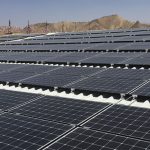Solar panel technology has played an essential role in the overall shift to renewable and sustainable energy sources. However, one of the major downfalls of this method is that it cannot generate energy after sunset. This might change in the near future.
According to researchers, combining photovoltaic cells with thermoradiative cells can help the solar panels generate at least one-quarter of energy at night as well.
For the uninitiated, thermoradiative cells are devices that generate power by using the energy emitted by radiative cooling. Currently, these cells are being tested in a number of industries, mainly manufacturing industries, where waste heat is being harnessed.
According to Jeremy Munday, an electrical and computer engineer from the University of California, Davis,
We were thinking, what if we took one of these devices and put it in a warm area and pointed it at the sky. A regular solar cell generates power by absorbing sunlight, which causes a voltage to appear across the device and for current to flow. In these new devices, light is instead emitted, and the current and voltage go in the opposite direction, but you still generate power. You have to use different materials, but the physics is the same.
Researchers believe that this new technology will boost overall energy production by at least 12 percent. It is a relatively cheap and inexpensive way of keeping the solar cells functional at night as well.





